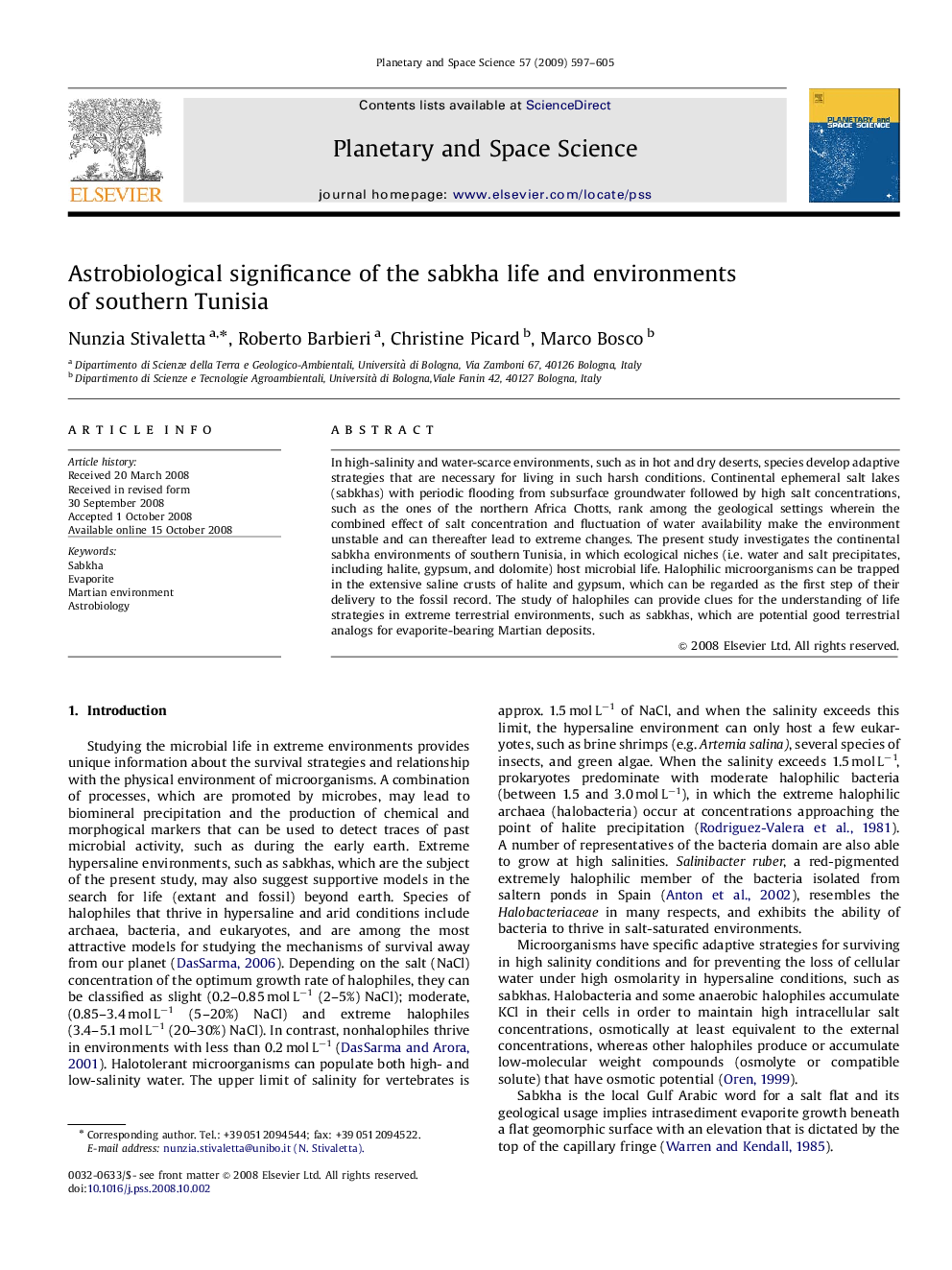| Article ID | Journal | Published Year | Pages | File Type |
|---|---|---|---|---|
| 1782290 | Planetary and Space Science | 2009 | 9 Pages |
In high-salinity and water-scarce environments, such as in hot and dry deserts, species develop adaptive strategies that are necessary for living in such harsh conditions. Continental ephemeral salt lakes (sabkhas) with periodic flooding from subsurface groundwater followed by high salt concentrations, such as the ones of the northern Africa Chotts, rank among the geological settings wherein the combined effect of salt concentration and fluctuation of water availability make the environment unstable and can thereafter lead to extreme changes. The present study investigates the continental sabkha environments of southern Tunisia, in which ecological niches (i.e. water and salt precipitates, including halite, gypsum, and dolomite) host microbial life. Halophilic microorganisms can be trapped in the extensive saline crusts of halite and gypsum, which can be regarded as the first step of their delivery to the fossil record. The study of halophiles can provide clues for the understanding of life strategies in extreme terrestrial environments, such as sabkhas, which are potential good terrestrial analogs for evaporite-bearing Martian deposits.
